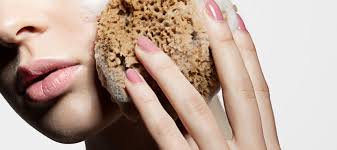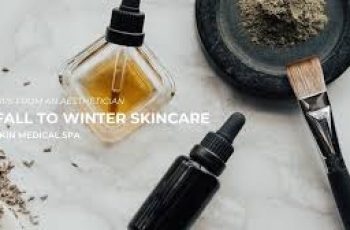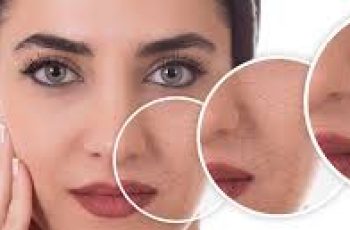
How Do You Deep Clean Your Pores?
At some point, most of us have become obsessed with our pores. Whether it’s staring into a magnifying mirror or picking at blackheads, we’ve all been there.
Pores can clog fast, especially if exposed to dirt, oil, or makeup. Even just walking outside can trigger build-up in your pores.
Pollution, sweat, cosmetics, and natural oils all contribute to clogged pores. So the big question is: how exactly do you deep clean your pores?
How Do I Clear My Deep Pores? To clean your pores properly, you need a consistent and effective skincare routine.
Here are proven steps to deep clean pores and keep them clear over time.
1. Always Remove Makeup Before Bed
Never sleep with makeup on your face. Leftover foundation, concealer, and powder can block your pores.
This can cause breakouts, blackheads, and even premature signs of aging. Use a makeup-removing cleanser, such as an oil-based balm or micellar water.
Follow up with a gentle facial cleanser to make sure your skin is truly clean. This double cleansing method clears away dirt, oil, and makeup thoroughly.
2. Exfoliate the Skin Regularly
Exfoliating removes dead skin cells that can clog pores. Use a physical scrub or chemical exfoliant two to three times a week.
AHAs like glycolic acid and BHAs like salicylic acid are ideal for this. Don’t exfoliate too often or too aggressively, as this can irritate your skin.
Gentle exfoliation keeps pores clear and helps other products work better. Avoid exfoliating on the same day as other strong treatments like masks or retinoids.
3. Use a Clay Face Mask
Clay masks are great at pulling out dirt, oil, and toxins from your pores. Kaolin clay and bentonite clay are both excellent for deep pore cleansing.
Apply once or twice a week to draw out impurities and minimize pore size. Clay masks should not be used too frequently, as they can over-dry the skin.
Avoid using them on the same day as exfoliating to prevent irritation. Always follow up with a hydrating product after a clay mask.
4. Stay Hydrated Inside and Out
Drink enough water each day to support healthy skin function. Water helps flush toxins out of your body, supporting clearer skin. Hydrated skin also keeps oil levels balanced, which helps prevent clogged pores.
Use a lightweight moisturizer that locks in hydration without clogging your pores. Humectants like hyaluronic acid or glycerin can help maintain skin hydration.
Avoid heavy creams if you have oily or acne-prone skin. What Do Clogged Pores Look Like? Clogged pores can show up in different ways depending on what’s inside the pore.
They’re most often caused by dead skin cells, oil, makeup, or bacteria. When the pore is blocked, the oil can’t reach the surface, leading to blemishes.
Here are the most common forms of clogged pores:
Blackheads: Open pores filled with debris that has oxidized and turned dark. Whiteheads: Closed pores that trap oil and bacteria under the surface.
Pimples: Inflamed bumps, often red or painful, with pus inside. Cysts: Deep, painful lumps under the skin that don’t come to a head. These types of clogged pores vary in severity and treatment needs.
What Products Help Unclog Pores?
There are many options to help clean and unclog your pores. Some are simple DIY remedies, while others require professional help.
1. Baking Soda (Use With Caution)
Baking soda can exfoliate and unclog pores by removing dead skin. Mix two teaspoons of baking soda with one teaspoon of water into a paste. Apply to the face, let it sit for 10 minutes, then rinse with warm water.
Keep in mind that baking soda can disrupt the skin’s pH balance. It may irritate sensitive skin, so do a patch test first if you’re unsure. Limit use to once per week, and always follow with a moisturizer.
2. Professional Extractions
If clogged pores are persistent, professional extraction may be the best route. Dermatologists or estheticians use sterilized tools to remove blockages safely.
This prevents scarring, infection, or skin trauma from DIY squeezing. Never attempt deep extractions at home, especially with cystic acne. You risk spreading bacteria or damaging the skin permanently.
3. Exfoliate With AHA or BHA
Chemical exfoliants are one of the best ways to clear pores over time. AHAs like lactic acid exfoliate the surface of the skin and improve glow.
BHAs like salicylic acid penetrate deep into the pore to clear out oil. Use chemical exfoliants 2–3 times per week depending on your skin type.
Avoid combining them with retinol or other strong actives on the same day.
4. Use a Pore Strip (Sparingly)
Pore strips can temporarily remove blackheads from the surface of the nose. While satisfying, they only work on superficial debris—not deeper clogs.
Overuse can cause irritation, especially on sensitive or dry skin types. Make sure your skin is clean and moist before applying a pore strip.
Follow the directions carefully and avoid using more than once a week. Do Clogged Pores Go Away On Their Own?
Sometimes clogged pores will clear naturally as skin sheds and renews itself. But this can take a long time, and you may develop ongoing breakouts in the meantime.
A regular routine helps your pores stay clear and minimizes new blockages. Without a skincare regimen, clogged pores often return or worsen over time.
How Do You Get Rid of Clogged Pores Overnight? Here’s a quick routine you can try if you want to reduce clogged pores overnight.
Double Cleanse – Remove all traces of makeup and dirt with an oil-based cleanser. Exfoliate Gently – Use a mild AHA or BHA exfoliant to unclog surface build-up.
Apply a Clay Mask – Leave on for 10–15 minutes to absorb impurities. Use Retinol (Optional) – If tolerated, apply retinol to promote cell turnover.
Moisturize – Use a lightweight, non-comedogenic moisturizer to rebalance the skin. While not all clogs will disappear overnight, you’ll see a big improvement.
For stubborn pores, repeated treatments and professional care may be needed. Additional Tips for Keeping Pores Clean
Always wash your face after working out or sweating. Use non-comedogenic makeup and skincare products. Don’t over-wash or scrub your skin, which can lead to oil overproduction.
Change your pillowcases and towels regularly to avoid bacterial buildup. Avoid touching your face, which can transfer dirt and bacteria to your skin.
Why Some Pores Look Bigger Than Others Your genetics, ethnicity, and skin type all play a role in your pore size. Oilier skin types often have more visible pores due to increased sebum production.
Sun damage and aging can also stretch and enlarge the appearance of pores. Although you can’t shrink pores permanently, you can make them look smaller.
Keeping them clean and using targeted products helps minimize their appearance.
Final Thoughts: Mastering the Art of Deep Pore Cleansing
Deep cleaning your pores isn’t about aggressive scrubbing or stripping your skin. It’s about consistent care, smart product choices, and understanding your skin’s needs.
Once you get into the habit of double cleansing, gentle exfoliating, and masking, you’ll find that clogged pores become much less frequent and easier to manage.
If your pores still feel congested, a visit to a dermatologist or facialist can help. With the right skincare strategy, you’ll achieve smoother, clearer, and healthier-looking skin.
Your pores might be small—but how you treat them makes a big difference.


